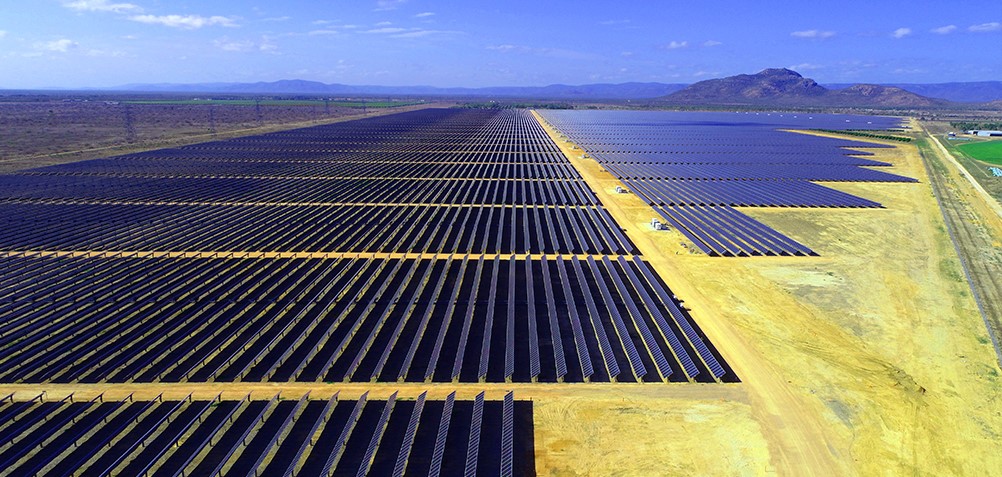
Australian Renewables; better than 2020 vision
A Major Milestone
In early September there was significant excitement in Australia for the renewable energy sector. A year ahead of schedule Australia had reached a milestone of 6,400MW needed to achieve the 2020 large scale clean energy target – a milestone that was passed on 30th August 2020. The achievement completed a target set out in 2001 (and revised in 2015), comes at a curious time for Australian renewable energy. When the target was first set and later revised there was a greater spirit of bipartisan political cooperation for renewable energy whereas now many would argue that politics hinders rather than helps the cause of renewables.
As a country that feels the brunt of climate change, Australia has struggled with drought and unseasonably early bushfires and there is perhaps an awareness that despite being ahead of target there is still a lot more to do. This article hopes to look at what is next for Australian renewable energy.
Thinking Global but Acting Local
Australians take climate change seriously. A poll from earlier this year saw 64% of Australians rank climate change as the biggest challenge facing Australia. The threat is viewed seriously enough that of the 64%, 61% feel that steps should be taken to combat climate change even if it involves significant costs. As regular Australia watchers will know, many considered this year’s elections as a referendum on renewable energy, however that was a misconception, the election was a complex affair and issues such as tax played a much bigger role. However, the election did have a significant knock on effect for clean energy, it put a pro-coal government in power and effectively removed national level leadership for clean energy.
In most countries this national level attitude would be problematic, but Australia is blessed with a myriad of strong local identities – if you’re not sure of this watch any game of Rugby League in the State of Origin series! Its fair to say that there is a healthy rivalry between Australian states and cities and that with a dearth of national leadership, it is local politicians who are putting down markers for clean energy. Key moves in this area include:
On the 1st January 2020, Canberra the Australian Capital will switch to 100% renewable energy.
New South Wales has become home to the first community owned social enterprise energy retailer in Australia; Enova Community Energy.
New South Wales local government is taking a very different line from its national party and is pushing for greater levels of renewable energy investment.
The recent Future North report is pushing for Queensland to set up its own Green Bank to help develop the vast renewable energy potential of the north of the state.
Overall it is likely that local level actions will play a major part in driving the progress of renewable energy. What may be more significant in the longer term however is that this local action may make it harder for a national government to own strategy in the longer term. A good example of this is in Western Australia, where Horizon Power is a state-owned utility. Like many utility firms the major impact felt from a lack of national leadership comes from the lack of grid modernization (a similar problem is emerging in the USA). Horizon Power has found a way to beat grid connectivity issues, its pulling down the poles and wires and switching to microgrids and standalone power systems instead. This looks to be a long-term trend for Australia which has often struggled with a national grid given the remoteness of many communities. When the grid becomes decentralised through being dismantled, it is hard to see how federal government will be able to exert real influence on what will be local energy.
700% Renewable Energy
The famous painter Michelangelo was said to have remarked “The greater danger for most of us lies not in setting our aim too high and falling short; but in setting our aim too low and achieving our mark.” It turns out that Alan Finkel (Australia’s Chief Scientist) and Darren Miller (CEO of ARENA) are both advocates of Michelangelo’s philosophy, in the recently unveiled National Hydrogen Strategy they have advocated for Australia to build towards 700% renewable energy capacity.
The key point here is that of hydrogen as a clean energy source if it is generated using solar and wind power. There is rapid recognition that Australia could become a major player in the wider APAC region for hydrogen exports since Australia has abundant land for large scale renewable energy projects required for hydrogen production whereas likely customers such as Japan and South Korea are land poor and are very interested in hydrogen to help meet their energy targets. Nor is Australia purely focused on hydrogen, a new scheme in the Northern Territory worth circa AUS $20bn seeks to connect Singapore to a major solar scheme outside of Tenant Creek.
What is clear is that Australia is charting a very different course for itself than what has been seen before in renewable energy. It will become a major global centre of low-cost energy in a zero-carbon global economy.
A Long Term Vision
It would be fair to say that Australia is succeeding in spite of some self-created obstacles. The medium-term challenge will be to see how the industry handles proactive negativity from individuals such as Angus Taylor (the energy minister) and what support will be offered to help develop the growing zero carbon economy. Ultimately the sector in Australia is mature enough to not need support in the form of subsidies, but a measure of certainty from federal level would go a long way.
